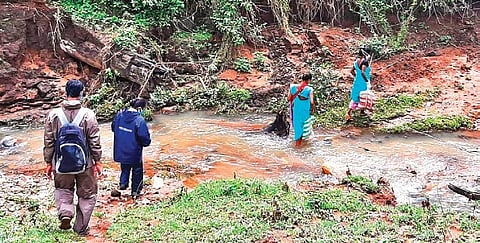

The dense forests in Bastar have sprawling hilly terrains and dangerous river beds. Lurking in the puzzling landscape is a dangerous bloodsucker— the anopheles mosquito— that has taken hundreds of lives mainly in the tribal region.
The Bastar zone is area-wise bigger than Kerala and is among the few geographical locations endemic to malaria parasites — plasmodium vivax and P. falciparum. It has an Annual Parasite Incidence (API-malaria) of over 10— among the highest in the country. API-10 is equivalent to 10 cases per thousand people.
The state government has launched a massive campaign, Malaria Mukt Bastar, against the persisting challenge of vector-borne disease. Government officials have walked miles across the hills and crossed rivers to access remote villages. When Chhattisgarh came into existence in November 2000, its API stood at 16.80, which came down to 1.97 in 2019 owing to evidence-based modern intervention tools and effective care. But the story of the Bastar zone remains unchanged with 16 blocks accounting for 65% of the state’s malaria cases.
“Malaria remains a serious public health concern in Bastar. Besides the Maoist threat, the inhospitable terrain and the lack of attention to health issues have been key hindrances to effectively counter the disease. We have launched an extensive campaign coupled with a local area specific strategy with defined objectives, scope, and outcomes,” said state Health Minister T S Singhdeo.
What’s the campaign about?
As per the last three year’s data, the prevalence of malaria cases was highest during January, July, and November. Based on it, a three-phase campaign was scheduled coinciding with the period. The first phase in January-February tested around 14.06 lakh people and 64,646 (4.6%) were found positive who were given the treatment with follow-up. Then, as part of the campaign, stickers are re-pasted outside each covered house after giving treatment to those found positive — both symptomatic and asymptomatic cases. Health cards given to each revisited house during the follow-up were ensured by Mitanins.
Identifying the tested
2,804 health survey teams covered 3,226 remote villages in seven districts. They examined blood samples through Rapid Diagnostic Tests (RDT). The toe of the tested person was marked with indelible ink as identification. After diagnosis, patients are given complete treatment with free medicines. Those in serious conditions were shifted to health centres and hospitals. The health awareness drive and preventive steps included source reduction activities to eliminate mosquito breeding places in local dialects. “The objective is to eliminate re-establishment of local transmission and resurgence, making Bastar area malaria-free,” said Priyanka Shukla, Mission Director, National Health Mission.
Improvement in Phase-2
The Phase-2 covered June 20-July 31. During this phase, there was a decline of 53.48% in positive cases. In Phase-II, 22.51 lakh people, which is 95% of the targeted population, were screened and 29,500 malaria positive cases were given treatment.